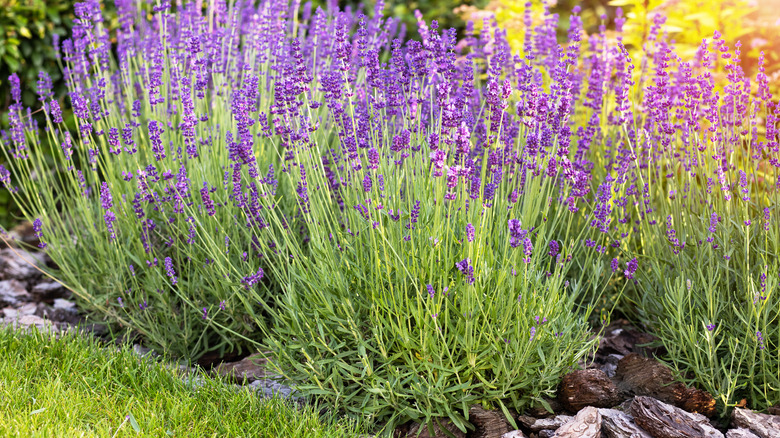When creating a herb garden or adding a few herbs to your existing garden, it’s important to make sure that all plants placed together are compatible. That means they need the same basic elements to thrive and flourish. It’s also a good idea to choose herbs you plan to use or those that offer the desired aesthetics. Two perfect companion plants for herb gardens include lavender and oregano.
Lavender (Lavendula angustifolia) is a fantastic, showy, and fragrant plant known for its blue-green foliage and pretty purple flowers. With numerous species available, it’s fairly easy to choose those that will pair well with other herbs. One version, called Provence, is an excellent choice for those seeking a strong-scented plant. ‘Phenomenal’ is another variety noted for its ability to do well in high heat and humidity, with long flower spikes perfect for your flower bouquets. This herb is overall a reliable perennial when given its ideal conditions. You can cut the stems to cook with or dry them out to use as a scent enhancer in any room.
Oregano (Origanum) is another aromatic herb you can trim to add to soups, stews, or salads or dry it out to use as a seasoning. A very tolerant herb for many conditions, growing oregano in your garden doesn’t have to be difficult. The plant has beautiful green foliage with lightly colored, small flowers when in bloom. Origanum dictamnus is a small variety noted for its ornamental beauty, while Origanum majorana is a perennial perfect for culinary use.
Create the perfect environment for oregano and lavender

Both oregano and lavender are perennials, giving you years of added beauty, fragrance, and flavor if maintained well. For that to happen, create the ideal environment. Both plants need to be grown in full sun, at least six to eight hours per day. They also both need well-draining soil. Neither plant will do well if the soil remains overly moist all of the time, especially during the winter months. Too much moisture is a known killer of lavender, for example. Both plants are drought-tolerant once established (which can take a full season).
During the summer months, ensure ample space between plants to encourage proper air circulation. Both herbs will struggle if you live in an area with high humidity. In these gardens, you can also use non-organic mulches, like pea gravel. That allows for better air circulation and keeps the foliage dry. When it comes to soil composition, aim for an organic fertilizer when possible instead of overfertilizing with chemicals. Lavender doesn’t need much fertilization at all. Oregano will not thrive in soil that is too acidic but will tolerate both neutral and alkaline soils well. Lavender does well in soil that’s slightly alkaline.
After choosing lavender and oregano plant varieties best suited for your environment, plant them with some distance between them, usually at least three feet to allow both plants to spread as they mature. You can grow both of these herbs in gardens, containers, raised beds, or even in open fields.
Maintaining oregano and lavender
Both herbs lend themselves to harvesting to allow you to dry out their leaves for culinary purposes. To encourage growth, be sure to prune lavender each year in the spring months. Do so when the leaves begin to emerge at the bottom of the plant near the soil. You can remove as much as a third of the top of the plants while pruning to prevent the plant from becoming more woody.
The best time to prune oregano is just before the plant begins to reach its flowering stage. When ready, trim back the stem tips, but be sure to leave several leaf pairs in place to allow it to continue to grow and expand. You may wish to keep only a couple of pairs if you want to maintain a more compact plant or, to encourage more bushy displays, keep six pairs or more. If the plant is allowed to bloom fully, this will hinder growth and reduce the overall flavor of the leaves.
While lavender doesn’t have many pest problems, oregano could need help with aphids, thrips, and cutworms. Monitor for them and use natural pest remedies in the garden to remove them. Both plants have a few diseases that must be managed. For oregano, fungal diseases, including mint rust, can develop. Lavender is susceptible to phytophthora, a disease of the soil that worsens due to overwatering. With careful monitoring of both plants, spotting these diseases early on and getting treatment for them quickly is possible.